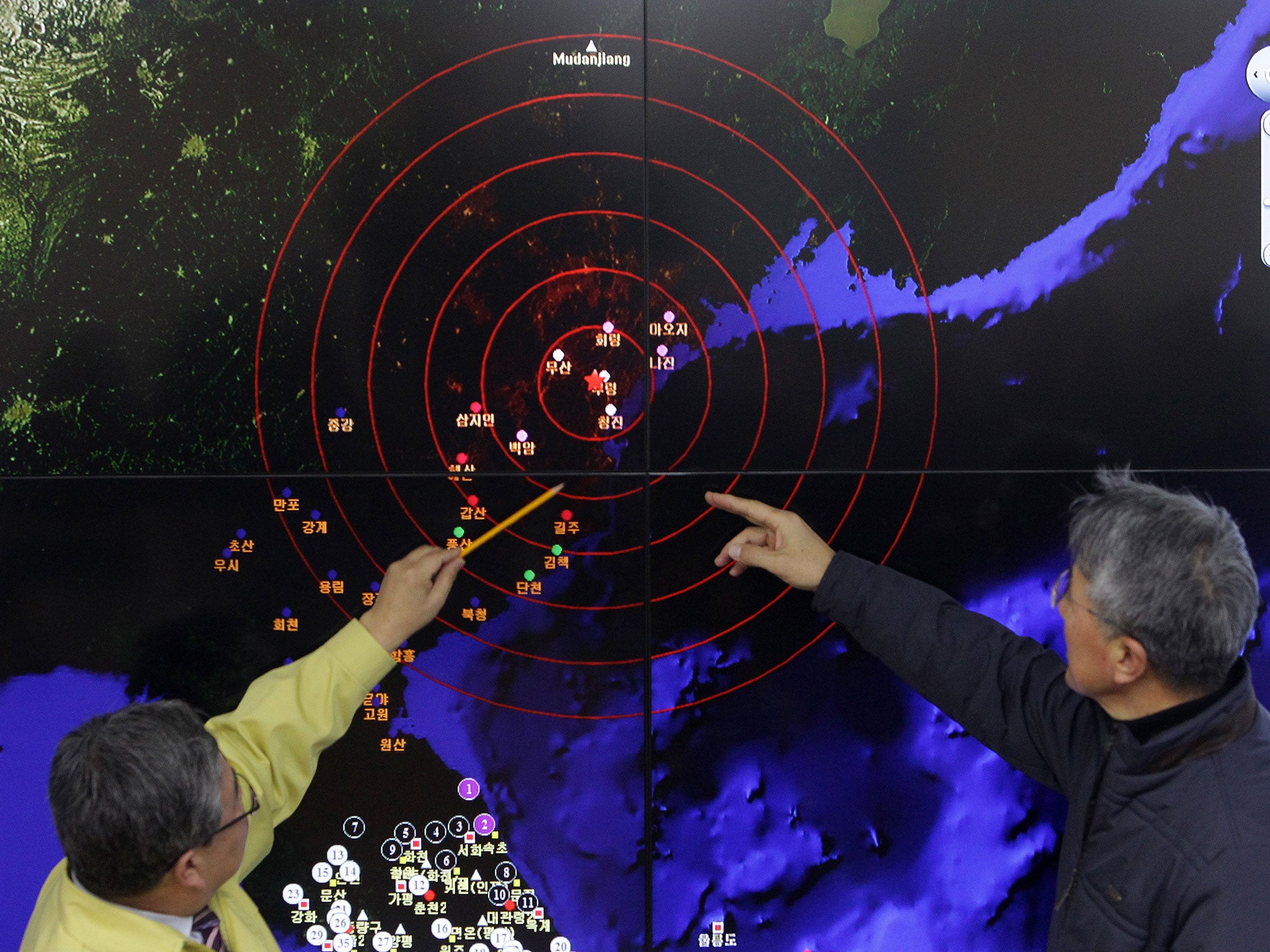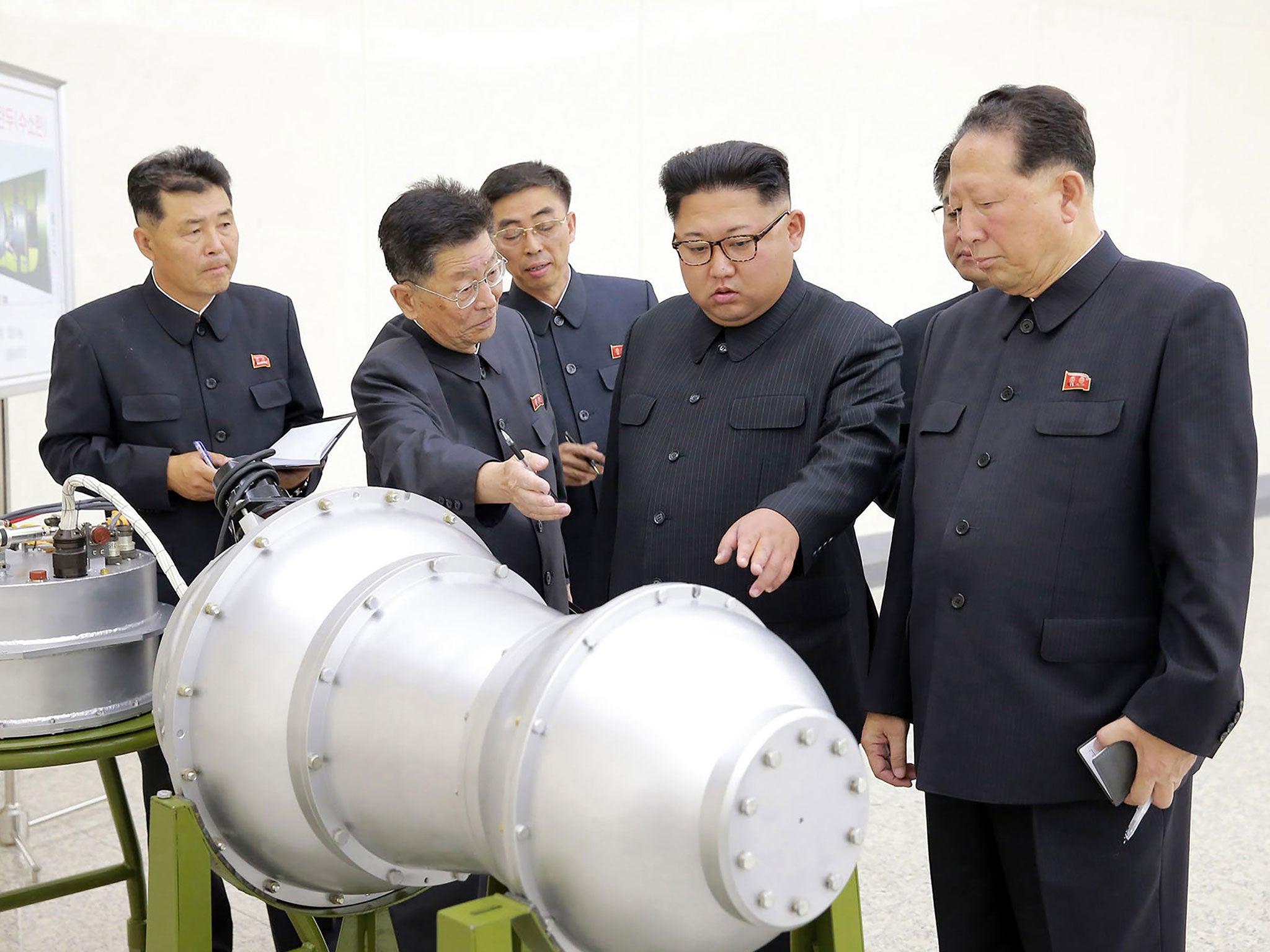North Korea's nuclear test site has collapsed, say geologists
Findings raise questions about recent announcement Pyongyang will halt testing programme
Your support helps us to tell the story
From reproductive rights to climate change to Big Tech, The Independent is on the ground when the story is developing. Whether it's investigating the financials of Elon Musk's pro-Trump PAC or producing our latest documentary, 'The A Word', which shines a light on the American women fighting for reproductive rights, we know how important it is to parse out the facts from the messaging.
At such a critical moment in US history, we need reporters on the ground. Your donation allows us to keep sending journalists to speak to both sides of the story.
The Independent is trusted by Americans across the entire political spectrum. And unlike many other quality news outlets, we choose not to lock Americans out of our reporting and analysis with paywalls. We believe quality journalism should be available to everyone, paid for by those who can afford it.
Your support makes all the difference.North Korea’s main nuclear test site has collapsed following its latest bomb test and could be at risk of leaking radiation, research by Chinese geologists has shown.
As a result, the Punggye-ri site under Mount Mantap has been rendered unsafe for further testing and should be monitored, scientists from the University of Science and Technology of China have said.
Their findings raise questions about Kim Jong-un’s announcement his country was ceasing its testing programme ahead of planned meetings with the US president, Donald Trump, and his South Korean counterpart, Moon Jae-in.
Data was collected following the detonation of the most powerful of North Korea’s six nuclear bomb tests on 3 September, thought to have triggered four earthquakes.
At the time, Japanese media said the detonation caused one of the tunnels to collapse, potentially killing 200 construction workers.
The yield of the bomb was estimated at more than 100 kilotons of TNT, at least 10 times stronger than anything Pyongyang had tested previously.
The Chinese paper, authored by Tian Dongdong, Yao Jiawen and Wen Lianxing, said the first of those earthquakes, which occurred eight-and-a-half minutes after the explosion, was “an onsite collapse toward the nuclear test centre,” while the subsequent quakes were an “earthquake swarm” in similar locations.
“In view of the research finding that the North Korea nuclear test site at Mantapsan has collapsed, it is necessary to continue to monitor any leakage of radioactive materials that may have been caused by the collapse,” the authors said.

Another similar test “would produce collapses in an even larger scale, creating an environmental catastrophe,” the study said.
The peer-reviewed study has been accepted for publication by the Geophysical Research Letters journal.
A study published last month by the journal, authored by a team led by Liu Junqing at the earthquake bureau in Jilin province along the border with North Korea, found similar results of the 3 September test.
It described the aftershock which followed seconds later as most likely the “rapid destruction of an explosion-generated cracked rock chimney due to cavity collapse.”
North Korea’s nuclear tests have caused seismic events in Chinese border towns and cities, forcing the evacuations of schools and offices, sparking fears of wind-born radiation and leading to a backlash among some Chinese against their country’s unpredictable traditional ally.
Chinese authorities have said they have not detected any radiation risk from samples collected along the border.

Pyongyang said the promise to shut down the Punggye-ri site was to “transparently guarantee” its dramatic commitment to stop all nuclear and missile tests.
But experts have now warned that damage to the complex could be the reason North Korea is willing to dismantle the site.
“They’re not giving up anything,” Robert Kelley, a former inspector for the Vienna-based International Atomic Energy Agency, told Reuters. “That complex, I would guess, has been damaged beyond reuse.”
But 38 North, a website run by the Johns Hopkins School of Advanced International Studies, said satellite imagery showed tunnelling was conducted this year, suggesting the site was still operational, although recent activity had slowed considerably.
“There is no basis to conclude that the Punggye-ri nuclear test site is no longer viable for future nuclear testing,” it reported on Monday.
It comes ahead of a meeting between Kim Jong-un and Moon Jae-in, which will see Mr Kim become the first North Korean leader to cross the highly militarised border since the end of the 1950-1953 Korean War.
Additional reporting by agencies

Join our commenting forum
Join thought-provoking conversations, follow other Independent readers and see their replies
Comments